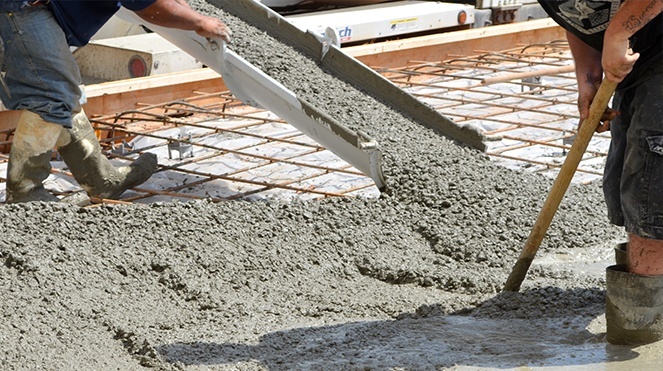Posted on September 24, 2019
Concrete’s durability is the main reason it is the most sought after building material. As such, most of the focus is on mixing the material to ensure maximum strength. However the next process, known as curing, may be more important.
Concrete gets its strength through hydration. This reaction occurs due to the water in the concrete mix. To ensure that the concrete is reaches its maximum potential maintaining that moisture is critical. That is where curing starts.

Understanding the Curing Process
By providing adequate moisture, optimal temperatures, and the right amount of time for the material to set, it becomes stronger, and more resistant to freezing, thaw, abrasion, scaling etc.
The Role of Temperature
Temperature plays major role in strengthening concrete. It directly affects the rate of hydration, and as a result, its durability. Strength development occurs more quickly at higher temperatures that it does at lower temperatures. Ideally concrete should be cured between 60 - 80 degrees F.
Time Duration for the Curing Process
The amount of time taken for proper curing depends on:
- The specific strength required
- The mixture proportions
- The ambient weather and other exposure conditions
- The properties, including size and shape, of the concrete member
Maintaining the curing period for as long as possible should be the goal of all projects.
Effect Of The Surrounding Atmosphere
During this process, if concrete is exposed to the environment, then factors like humidity and wind conditions should also be considered. These contribute to the rate at which moisture is lost from the concrete, thus leading to cracks, poor surface quality, and reduced durability.
Main Functions of Curing
The curing process is carried out right after placing and finishing. It is comprised of;
Maintenance of the Mixing Water
This function is relevant during the early stages of concrete hardening and includes:
Spraying And Fogging
These techniques are used when the ambient temperature is significantly higher than the freezing levels, with low humidity in the air.
Fogging helps to minimize plastic shrinkage and cracking while the concrete undergoes the final setting phase.
Ponding
This is generally used to cure flat slabs of concrete, like footpaths and pavements, on a smaller scale. The curing water temperature should be kept at least 20° lower than the concrete’s own temperature, in order to prevent thermal stresses from occurring.
Wet Covering
Once the concrete has sufficiently hardened, a wet covering saturated with water is used to avoid potential damage to its surface.
Reducing Mixing Water Loss
To prevent the loss of mixing water from the surface of the concrete, the following steps are generally recommended;
Apply Membrane Forming Compounds
These curing compounds, if applied after the final finishing process, effectively reduce the evaporation of mixing water from concrete. They come in two types; translucent, or white pigmented. The latter is often recommended for hot, sunny weather conditions to reflect incoming solar radiation.
Using Paper Or Plastic Sheets
By covering wet concrete with impervious paper or plastic sheets, evaporation can be reduced. However, care should be taken to ensure that the surface is hard – to prevent damage while placing these materials.
Cold Weather Strength Development
One of the main goals of curing concrete in cold weather is to accelerate strength gain by supplying enough heat, and moisture. Examples of methods to do that include:
Heating Coils
These are embedded near the surface of the concrete elements to protect it from freezing during cold weather.
Live Steam
Steam curing can be done by either applying highly pressurized steam in autoclaves, or by using live steam at atmospheric pressure.
Concrete Blankets
Insulation blankets can be used to cover the concrete surfaces that are subjected to harsh weather conditions during the curing process.
When curing in extreme weather conditions, it’s a good idea to take some extra care.
For cold weather, some techniques require heated enclosures, special curing compounds, and evaporation reducers. The curing period will also be longer due to a reduced rate of strength gain.
In hot weather, curing and protecting the concrete becomes even more important due to rapid moisture loss. For this, sun/windscreens, fogging, and evaporation retardants are used commonly. The curing period is also reduced, since strength gain is a lot faster due to the heat.
Be Careful
Concrete hardens soon after pouring; despite the curing process for enhancing strength and durability, it is still susceptible to damage due to applied weight for up to four weeks.
This is why builders have to wait at least 24 hours before allowing foot traffic on a new pavement, or sidewalk.
Similarly, vehicles should not be driven on a recently-poured driveway for at least ten days, and larger trucks should only be allowed after 28 days – giving the concrete enough time to develop maximum strength.
